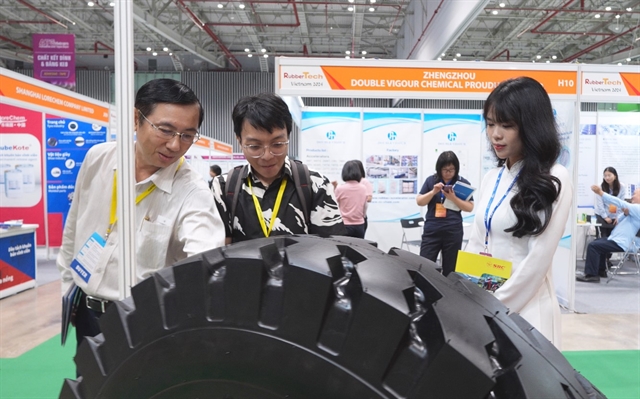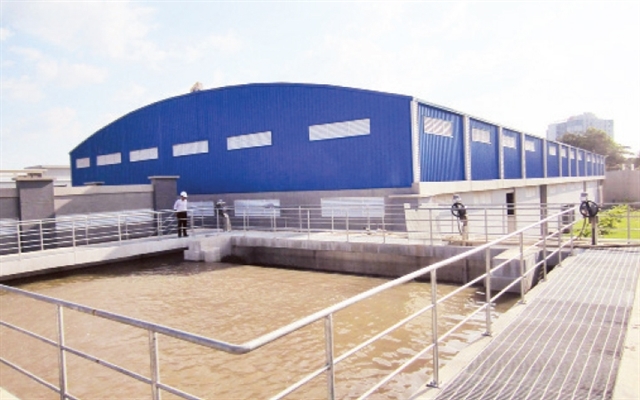 Society
Society

Fresh water for daily use in HCM City has been priced at 6 per cent higher than the previous rate since mid November.

|
| BOO Thủ Đức 3 Water Plant is equipped with modern technology. — Photo courtesy of nhandan.com.vn |
HCM CITY — Fresh water for daily use in HCM City has been priced at 6 per cent higher than the previous rate since mid November.
Environmental pollution and the impact of climate change have negatively affected the quality of water in rivers and canals in HCM City, especially the Sài Gòn and Đồng Nai river systems, according to a source from Nhân Dân (the People) newspaper.
To protect these water sources, the HCM City's Department of Natural Resources and Environment needs to carry out a number of measures, including developing master long-term and short-term plans on the granting of permits for the use of water and reform of administrative procedures.
In addition, relevant authorities should conduct research; monitor water exploitation activities via automatic, online technology; and strengthen coordination of management of waste discharge activities.
To avoid the risk of water pollution and lack of clean water for local use, vice chairman of HCM City People’s Committee Võ Văn Hoan instructed relevant authorities to carry out necessary tasks on safe water supply and water security.
Specifically, the Sài Gòn Water Corporation (Sawaco), in collaboration with departments of Construction, Natural Resources and Environment, Agriculture and Rural Development, and Planning and Architecture, among other agencies, is in charge of drafting an urgent plan on safe water supply and water security, and later submitting it to the People’s Committee for approval.
According to this plan, Đồng Nai River, Sài Gòn River and Đông Củ Chi Canal will have their water quality checked for potential pollution.
As results are collected, authorities will have specific plans for each case, including safety control of clean water supply systems and risk minimisation on pipeline network systems.
To efficiently provide clean water, HCM City will take raw water from Sài Gòn and Đồng Nai rivers at Hòa Phú and Hòa An pumping stations. From there, water will be taken to Tân Hiệp and Thủ Đức water plants for treatment before it is given out to locals.
Sawaco has drafted multiple check-up plans on raw water sources to ensure the safest water for locals.
Every month, the corporation hires boats for experts to supervise the river basin, including large canals with water that flows into the river. They then take water samples for quality inspection, determine potential polluted spots, and come up with possible solutions.
According to deputy general director of Sawaco Bùi Thanh Giang, to prevent incidents, the corporation carries out hourly monitoring and invested in quality monitoring and pipeline systems.
The HCM City Disease Control Centre has also implemented independent monitoring of water quality in the area while all water plants have applied safe water supply programmes, he said.
Giang added that the HCM City water supply system could ideally generate 2.4 million cu.m of clean water per day, not to mention the extra capacity of 500,000cu.m per day the system can produce.
Hence, the clean water supply for locals is always sufficient and stable, he said.
Giang stressed the importance of building some filter ponds in an effort to tackle potential pollution discharged from industrial parks or daily wastewater.
Sawaco has considered a saltwater dam on the upper reaches of Sài Gòn River and sedimentation and regulating lakes along the Đồng Nai and Sài Gòn rivers.
“If this plan is approved, we will start construction immediately as it will help ensure water safety for the city in the next 50 years,” Giang said.
Sawaco has also proposed building several underground water tanks in the inner city area. These would be a source of clean water for locals if unexpected incidents harmed water safety. If the level of organic substances or ammonium increased, the online monitoring system would dispense a sufficient amount of chlorine to treat the water.
If the pollution level exceeded the treatment threshold and water from Sài Gòn River could not be used, Sawaco said that Dầu Tiếng Reservoir could be used to discharge saline water and wash the solution out. — VNS